Image above: Sable Island mare and her late summer foal in a field of marram grass and beach pea.
My journey to Sable Island starts as it does for most other horse loving people. At first, it was all about the horses. Horses have served as great connectors throughout history worldwide, so it comes as no surprise that they are a source of inspiration and wonder for many. Perhaps we are drawn to their grace and beauty – or maybe it is their sense of independence, freedom and spirit.
Growing up, my sister and I would play with our toy horses on the beach and dream that we would one day stumble upon our own shipwrecked horse and live out stories just like in Walter Farley’s “The Black Stallion”. We read and treasured every horse book we could find. We were gifted one in particular about a family of wild horses, written by a naturalist who lived among them (“Wild Horses of Sable Island”, Zoe Lucas). Oh, how I loved that book! How could anyone not be enchanted by the idea of horses living on an island surrounded only by waves and sand and sky? And to think that this magical place was in Canada!
 A family band walking on south beach in early September.
A family band walking on south beach in early September.
 A chestnut stallion grazing in a richly vegetated inland area.
A chestnut stallion grazing in a richly vegetated inland area.
In 2022, the stars aligned and I was able to make an end of summer visit to Sable with Kattuk Expeditions. Flying over the island, I was awestruck by the colour palette – the green of the marram grass, deep ocean blue and golden quartz sand.
Summer on Sable can be vibrant, busy and filled with an abundance of life. The skies were adorned by soaring seabirds and the beaches dotted with lazy seals resting in the sun. The horses were magnificent and seeing them frolicking on the island was a dream come true. We observed many family bands moving together – grooming, chasing, caring, protecting. (And yes, I did get to see a black stallion on the beach!)
 A black stallion strides along near the base of a high south beach dune in early September.
A black stallion strides along near the base of a high south beach dune in early September.
During our visit, we were fortunate to spend time exploring with Zoe Lucas. I could hardly believe that we were learning about the ecology and history of the island from the very legend who had written my beloved book all those years ago.
As we walked the network of horse trails that cover the island, I gained an appreciation for the importance of the many species that call Sable home. Venturing through the heath vegetation and fragrant bayberry, my attention was drawn away from the horses and downward to the smaller details. We looked for hidden burrow entrances, nests and foraging birds. I was captivated by beetles, spiders and the tiny sweat bee – newly recognizing the critical role that all of these creatures play in the delicate ecosystem.
 An Ipswich Sparrow perched on a strand of electric fencing around the Sable Island Station.
An Ipswich Sparrow perched on a strand of electric fencing around the Sable Island Station.
We climbed to the top of a dune on the North shore that allowed us to see both ends of the island at once, and I was struck by how the island is a microcosm of the world. A reminder of our oceans’ plight and a symbol of our shared dependence.
All these creatures living harmoniously on this refuge of shifting sand, the survival of each interdependent on the success of others. The seals feed at sea and bring nutrients back into the sand to nourish the vegetation, which is pollinated by bees and sustains the horses, who in turn distribute plants and nutrients as they travel. And then, when it is time for the horses to return to the earth, they too, through the grasses, become sustenance for their descendants yet to be born. We do not fully understand all of the intricate ecological relationships on the island, but we know that each link is important and that small changes can have a lasting impact.
 Sanderlings near the edge of the water on south beach.
Sanderlings near the edge of the water on south beach.
Sable is a place of wonder, beauty and surprise. I was told that no two days on the island are alike – and that the changing seasons transport you into completely different worlds. Determined to experience this for myself, I returned to the island in Winter 2023.
 North beach in winter, looking towards the east tip of the island, with Grey Seals scattered along the shoreline.
North beach in winter, looking towards the east tip of the island, with Grey Seals scattered along the shoreline.
In just a few months, the island had transformed. Gone were the vibrant greens, replaced by shimmering gold, honey and bronze. The horses’ woolly coats mirrored the warm earthy tones of the landscape, their manes blown by the winter wind in unison with the flaxen marram grass. The absence of many migratory birds initially made the winter skies seem quieter – but soon the vocalizations from the colonies of Grey Seals filled the air and the rough sea crashed against the shore, an ever changing melody of sound.
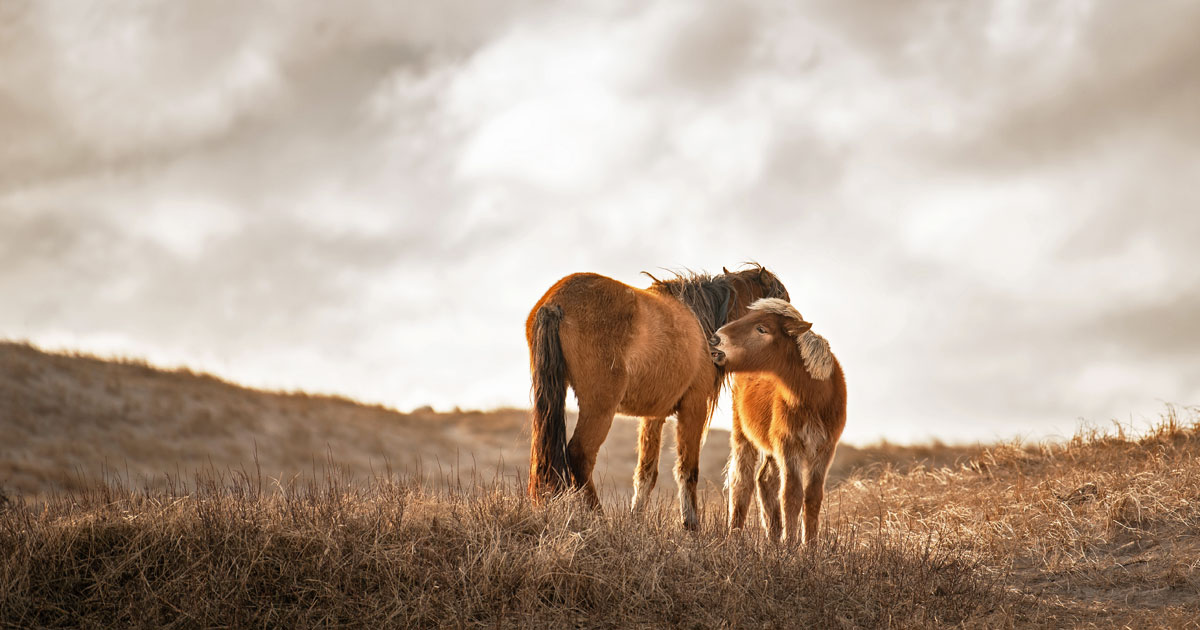
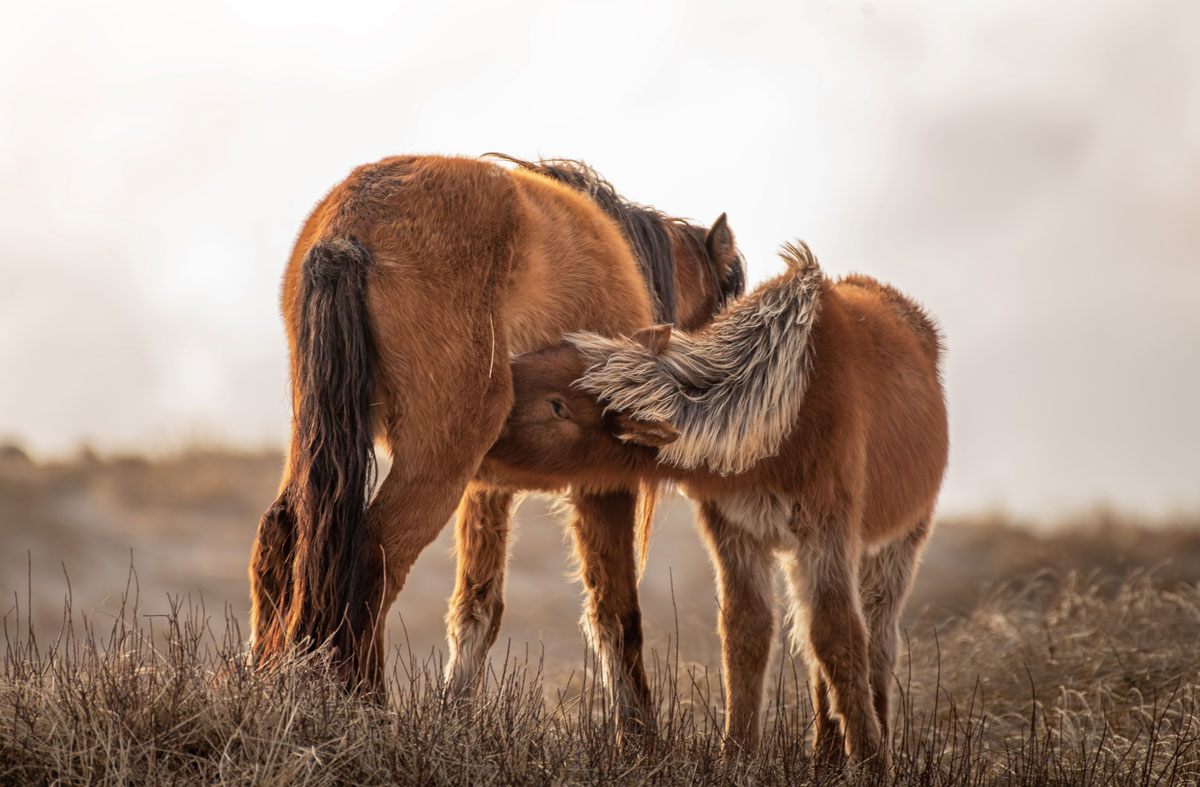 Mare and foal, in their thick winter coats, nursing, and above, grooming.
Mare and foal, in their thick winter coats, nursing, and above, grooming.
Watching a mare forage through the dormant grass, I was overwhelmed by her resilience – especially as her foal sidled up to nurse, supplementing his own winter diet. Of all the mammals brought to Sable hundreds of years ago, it is a marvel to watch the only ones who have successfully adapted to the environment.
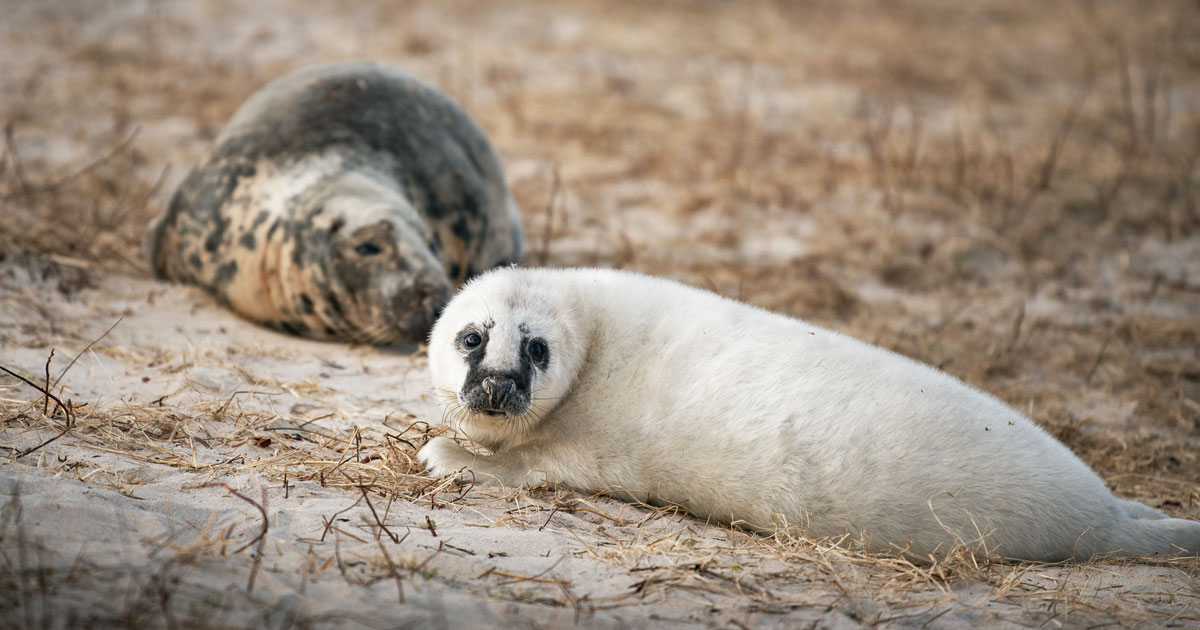 Grey Seal mother and pup in late January.
Grey Seal mother and pup in late January.
There were Grey Seals everywhere. Everywhere! Walking around the island we had to zig zag to ensure that our path remained the appropriate distance from these curious creatures. Stepping over ridges or dunes required a second (or third) look to make sure we did not disturb anyone.
We witnessed different stages of seal development – from nursing little ones at their mothers’ sides, to ambitious weaned pups (“weaners”) that determinedly hop themselves to the top of the highest dunes or nestle themselves into cozy sand burrows. They had such personalities! Some pups would hiss and squirm away, some were curious and would wave a flipper and wriggle in our direction.
 A Grey Seal weaner in the golden winter grass.
A Grey Seal weaner in the golden winter grass.
Learning about the natural history of Sable helps us better understand the impact of human activity on the environment and to gain a deeper appreciation for the importance of conservation. Sable is a barometer for the health of our oceans and success of our environmental efforts. (Both metaphorically and quite literally – the island has provided important atmospheric and environmental data that can only be collected from a location far enough away from mainland interference and confounding factors.)
Sable is more than an excursion. It is a place of solace, of learning and exploration. It is in many ways an enigma. A myriad of contradictions. All at once delicate and robust, interconnected and free. It is a reminder of the fragility of our natural environment, a sanctuary in which we can find comfort in its resilience and vow to be its guardian. Admittedly, I still have work to do when considering my own environmental impact, but Sable has fueled conversations with lasting effects.
I feel connected to this place in ways I cannot explain. Some people hear mountain song, some are drawn to the bustle of cities, and some hearts are pulled to the ocean. Many have yet to find the place in the world that speaks most to them. Once I set foot on that beautiful sandy shore, I knew. In one way or another, Sable has been calling to me all along. I may not have brought a shipwrecked horse home, but the island is still very much part of my story. Sable binds together the creatures on its shores, and our shared love and appreciation for the island develops connections for us all well beyond its borders. Sable tells a story – of nature and of humanity.
At first, it was all about the horses. Now, it is about so much more.
“In the end, we will conserve only what we love; we will love only what we understand; and we will understand only what we are taught.” – B. Dioum, 1968
Let us nurture our Sable connections… and we will learn, teach, love and conserve together.
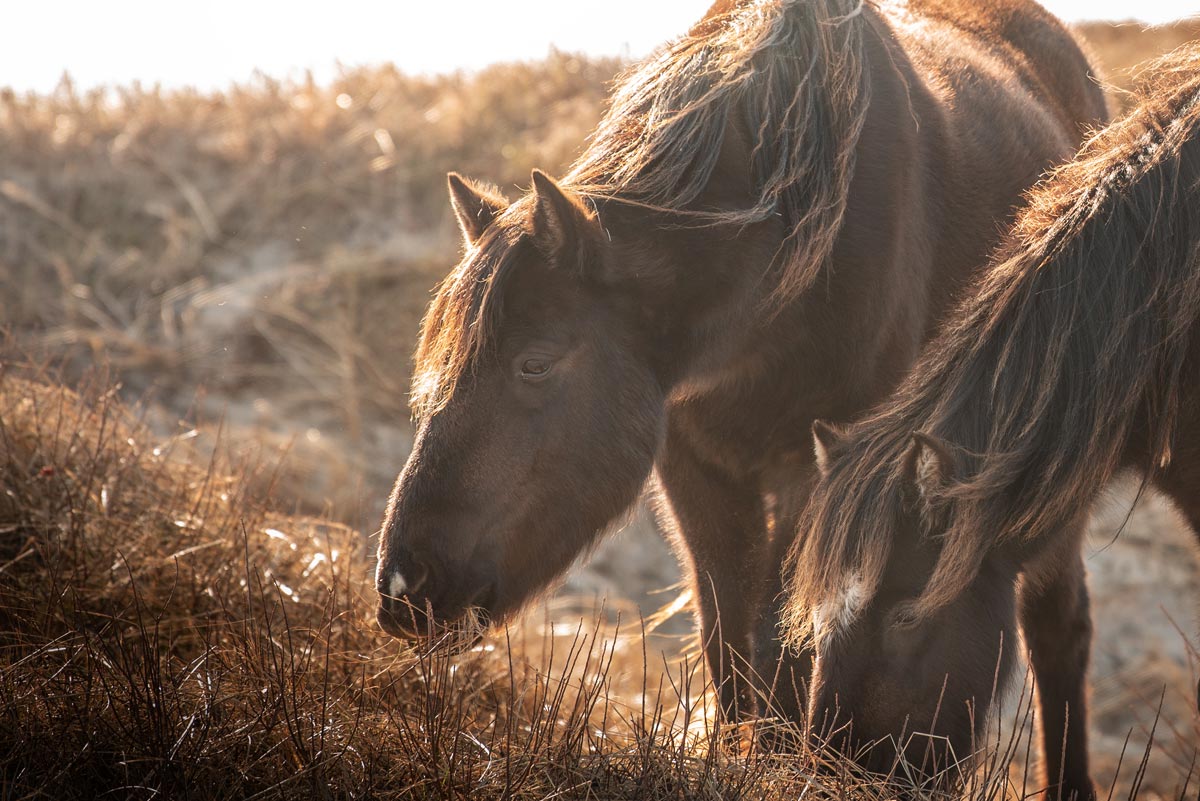
Lauren Hughes
Prepared for the Sable Island Institute, February 2023
All photos © 2023 Lauren Hughes

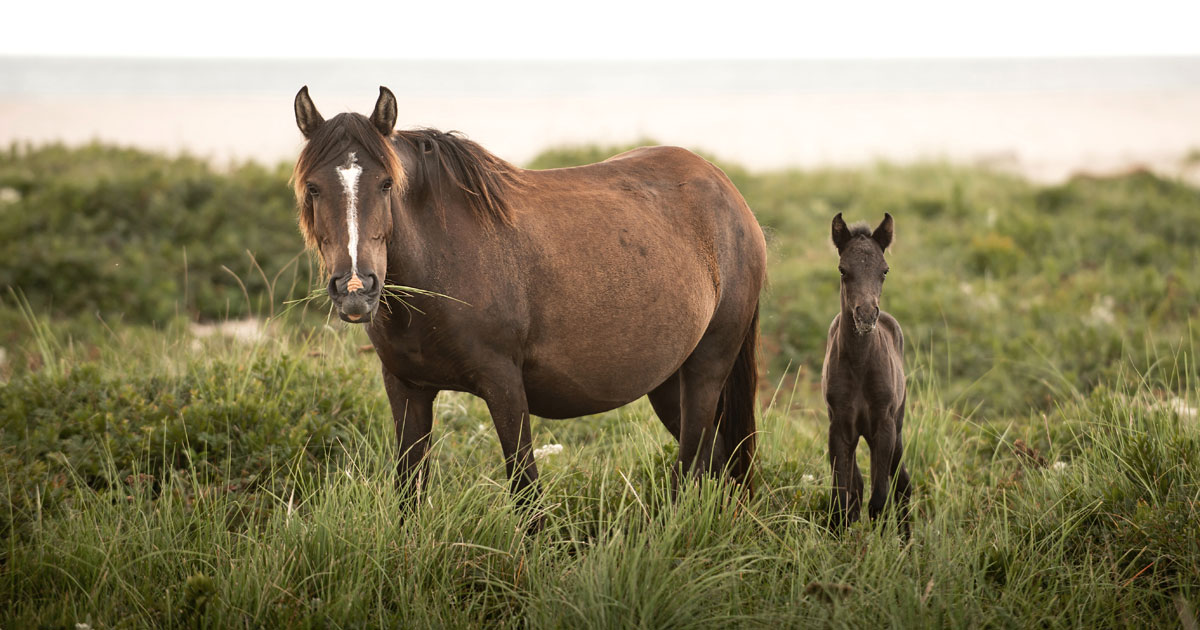

7 Responses
The beauty of Lauren Hughes’ photos are outstanding. Her written article goes beyond anything I have ever read. Lauren makes the reader feel as if you are right along beside her experiencing the beauty of the wildlife and scenery of Sable Island for the very first time.
Thanks for sharing and teaching us Lauren. As you note: “In the end, we will conserve only what we love; we will love only what we understand; and we will understand only what we are taught.” – B. Dioum, 1968 – by sharing your story, we have all learned so much more.
You make me feel through your writing that I am indeed on Sable Island. A dream I hope to make real someday.
Judith – thank you so much! It means the world to have been able to share a piece of Sable with you!
Thank you for all of your kind words. I am grateful to those who have dedicated their lives to researching Sable and sharing their knowledge – and so glad that this story can become a small piece of the Sable community!
THANK YOU for sharing these mystical. magical pictures and words of this very precious island. IT is my intention to visit one day soon..
I also have a long history, loving wild horses. I always said that when my end to life comes I would love to return as a wild horse. I thoroughly enjoyed the trip you have taken us on Lauren. Thank you for sharing.